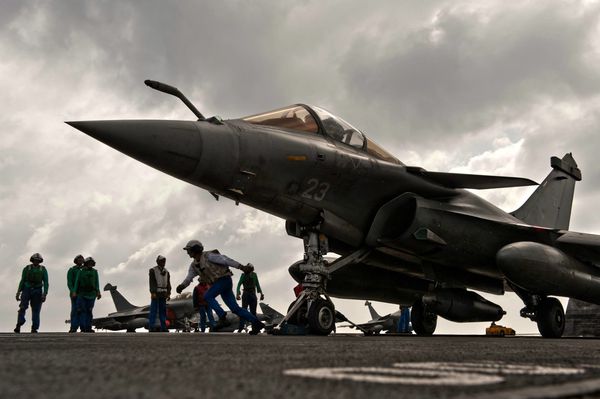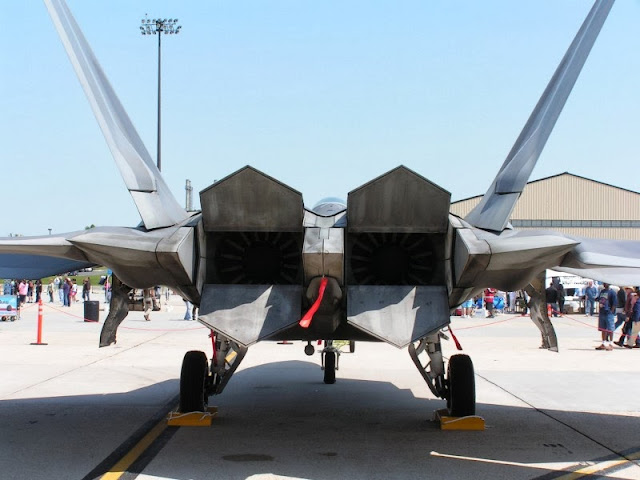Swiss Battle Could Be Euro-Canard Turning Point
First it was Dassault with the Rafale and then it was Eurofighter with the Typhoon that competed for the favor of the UAE Air Force. In Oman, it was the Saab Gripen against the Typhoon. In Qatar, who knows? Around the world, Europe’s three rival fighters have been locked in virtual combat. For Europe this is not necessarily a good situation, but the result of Switzerland’s evaluation of the three–in which it first favored the Rafale and then selected Saab’s Gripen, could prove pivotal in other competitions.
“This is a very bad situation,” said the head of the European Defence Agency, who said that Europe simply cannot afford such wasteful competition. When choosing a new fighter, each nation has different priorities, criteria and methodology. In addition to technical evaluation, politics, technology transfer, industrial offsets and commission payments have all played a part in previous selections. So when Switzerland evaluated the three so-called “Euro-canards,” many observers awaited its choice with considerable anticipation. By reputation, the Swiss are thorough and methodical. Moreover, they are quite rich, and politically neutral.
Nevertheless, and perhaps inevitably, the Swiss choice of the Gripen as its New Fighter Aircraft (NFA) could not escape controversy. The government overruled the air force’s choice of the Rafale on cost grounds, it was alleged. The purchase was supposed to be off-the-shelf, but the Gripen-E is a new development, some argued. A significant minority of Swiss citizens were entirely opposed to the NFA buy–and their voices may yet be heard if a national referendum is called on the decision.
The NFA evaluation started badly when Boeing decided not to bid, because (it said) the Super Hornet far exceeded the requirement. “It spelled Gripen, so we withdrew,” a Boeing official told AIN. The competition was characterized by many as a replacement for the air force’s 54 remaining Northrop F-5E/Fs. They now operated alongside 33 Boeing F-18C/D Hornets acquired in the mid-to-late 1990s. Both types were dedicated to the air superiority role.
As Col. Fabio Antognini, project manager, explained in a presentation to the Fighter Conference organized by Defence IQ in London last year, the air force also wanted the NFA in order to reintroduce the air-to-ground and reconnaissance roles that had been lost with the retirement of the Mirage IIIRS in 2003. Despite its neutrality, the Swiss saw a future need to contribute to combined operations abroad with these additional capabilities. Besides, the NFA would supplement the F-18C/Ds whenever the requirement for increased protection of Swiss airspace arose. This would involve patrols that were constantly airborne. Therefore, between 30 and 50 NFAs would be required.
Three Contenders Evaluated
In the second half of 2008, the Swiss air force conducted in-country flight evaluations of the three remaining contenders–the Eurofighter, Gripen and Rafale – from Emmen airbase. In some 10 sorties each, Swiss pilots (including Antognini) and ground-based specialists evaluated them in five roles: air policing; defensive counter-air; offensive counter-air; strike; and reconnaissance. Each contender was also allowed one flight to demonstrate additional capabilities that were not in the Swiss requirement.
Following this fly-off, the contenders were invited to submit details of improvements that they were scheduled to make to their aircraft by the projected delivery date to Switzerland of 2015. Between March and August 2009, the air force evaluation team visited Dassault, Eurofighter and Saab to witness flight and simulator demonstrations.
The result was two confidential flight test reports that were approved for distribution in November 2009. They were subsequently leaked to the Swiss media, providing outsiders with a fascinating insight into the respective flying performance of the three contenders, as seen by the Swiss air force.
The Rafale was the clear winner of the fly-off in each of the five roles. Moreover, the French jet retained its winning position in the Swiss evaluation of how the three contenders would be improved by 2015 (see table 1).
“The strong points of the Rafale were the quality of its sensors, such as the PESA (passive electronically scanned array) radar; the frontal optronics; and the EW (electronic warfare) suite, Spectra,” the report on the 2008 fly-off noted. “The good data fusion of all its sensors allowed to provide the pilot a very good situational awareness,” it continued. “The weak point of the Rafale was the lack of a helmet-mounted sight system,” the evaluators remarked.
The report praised the aerodynamic performance of the Eurofighter, notably its ability to supercruise at Mach 1.4. But the sensor data fusion and the EW suite were “weak points,” while range and systems reliability were noted to be “limiting factors.” Moreover, the report said, “the capabilities of the Eurofighter to fulfill recce and strike missions were rated as unsatisfactory.”
The report acknowledged that because of the Gripen’s design–it is the smallest of the contenders and the only one powered by a single engine–its “endurance, aircraft performances and aircraft weapon load were among the main limiting factors.” The evaluators said there was no sensor data fusion between the radar and EW suite, although the latter “was among the strong points of the Gripen.”
Only the Rafale met the minimum expected capabilities (MEC) in all five roles. The Eurofighter failed to make the grade in the strike and reconnaissance categories. The Gripen failed to achieve the MEC in all five roles.
That verdict did not change, even when the improvements to be expected by 2015 were factored in. The development of the Eurofighter’s air-ground capability has lagged significantly behind that of the Rafale. Even so, the proposed Tranche 3 P1E enhancements to the four-nation jet, that were evaluated by the Swiss team, failed to match the F3+ standard improvements to the Rafale numbering 18, and already contracted by the French air force. They included AESA radar and other sensor improvements. Moreover, the Swiss noted, “If the Rafale is sold to the UAE, 11 new upgrade items not taken in the evaluation will be part of the delivered configuration.”
As for the Gripen, Saab told the Swiss that it had scheduled 98 upgrade items for the MS21 version of 2015, including AESA radar and infrared search and track. But these were not enough to push the Swedish jet above the MEC level in any of the five roles. The November 2009 report therefore recommended the Rafale as the New Fighter Aircraft.
Leaked Test Reports
Antognini declined to comment on the leaked flight test reports. “All three candidates passed the evaluation…They met our requirements,” he told the Fighter Conference. He told AIN that it is important to note that those two reports were not the whole story. There were eight others produced, covering maintenance, noise, growth potential and other criteria. These were all weighted according to a pre-determined scale of Swiss priorities. This scale was also leaked to the media (see table 2) but the other reports stayed confidential.
Then the cost was factored into the evaluation, said Antognini, before one final main report was sent to the Federal Council–the Swiss government’s seven-member decision-making authority. The acquisition cost of the Gripen would clearly be lower than its two larger competitors. The smaller jet would also score better on adaptability to Swiss airfields and life-cycle costs.
The first thing that the Federal Council did was–nothing! The crisis in financial markets gave even the Swiss pause for thought. The Federal Council wanted to trim the nation’s defense budget. Given the bids submitted by Dassault, Eurofighter and Saab, the NFA budget of some CHF 5 billion ($5.5 billion) did not seem affordable, despite all three contenders offering to offset 100 percent of the cost by placing contracts with Swiss industry–and especially since the Euro currency was depreciating all the time against the ever-stronger Swiss franc.
Over the next year, however, the Swiss Parliament voted extra funds for defense, and told the Federal Council to conclude its NFA evaluation. The three manufacturers sharpened their pencils, while evidently reducing the number of aircraft on offer.
Of most significance, Saab defined proposed upgrades to the Gripen in much greater detail, flew the NG demonstrator with a new F414 engine and AESA radar, and suggested that the Swedish government would soon place an order.
The Choice Revealed
On Nov. 30, 2011, the Federal Council announced its choice. The Gripen was the lowest cost option, but it met the requirements, and was the most adaptable choice, the Council said. Ruag Aerospace and up to 200 other Swiss companies stood to gain much from codevelopment of the Gripen-NG (subsequently redesignated Gripen E). Meanwhile, Sweden’s status as a neutral country, like Switzerland, had been a consideration.
Defense minister Ueli Maurer told journalists that the acquisition cost was CHF3.1 billion ($3.4 billion) for a 22-aircraft package including training, support and spares. Swiss media previously reported that the Rafale bid was about CHF3.5 billion, with the Eurofighter costing CHF4 billion, although the proposed number of aircraft was never made clear. Commenting on the decision, Dassault insisted that the Rafale could have met the Swiss requirement “with a smaller number of aircraft an equivalent or lower cost.”
Reviewing the decision a few months ago, former Swiss Air Force commander Gen. Max Gygax admitted that, in the end, the choice was a political one. “The Gripen is multi-role, and life-cycle costs are very important,” he told journalists at the Paris Air Show in June. “The Gripen-E is a big step forward from the current C/D version,” he noted. But even the latter’s performance in the 2008 fly-off was much closer to that of the Eurofighter and Rafale than the Swiss evaluation team had anticipated, he told AIN.
As the clear winner of the flight evaluation, the Rafale won the battle, but lost the war in Switzerland.The Eurofighter did not emerge with much credit. Gygax told AIN that he did not expect the four-nation jet to score worse than the Rafale in air-to-air roles. Moreover, he added, the unpublished reports on maintenance and training did not rate the Eurofighter any better than the Rafale. “The spares are possibly cheaper because of the large number of aircraft, but it’s a very manpower-intensive aircraft,” he said.
Swiss Battle Could Be Euro-Canard Turning Point | Aviation International News Rafale Solo Display by Anthony Pecchi:
CHEERS



































